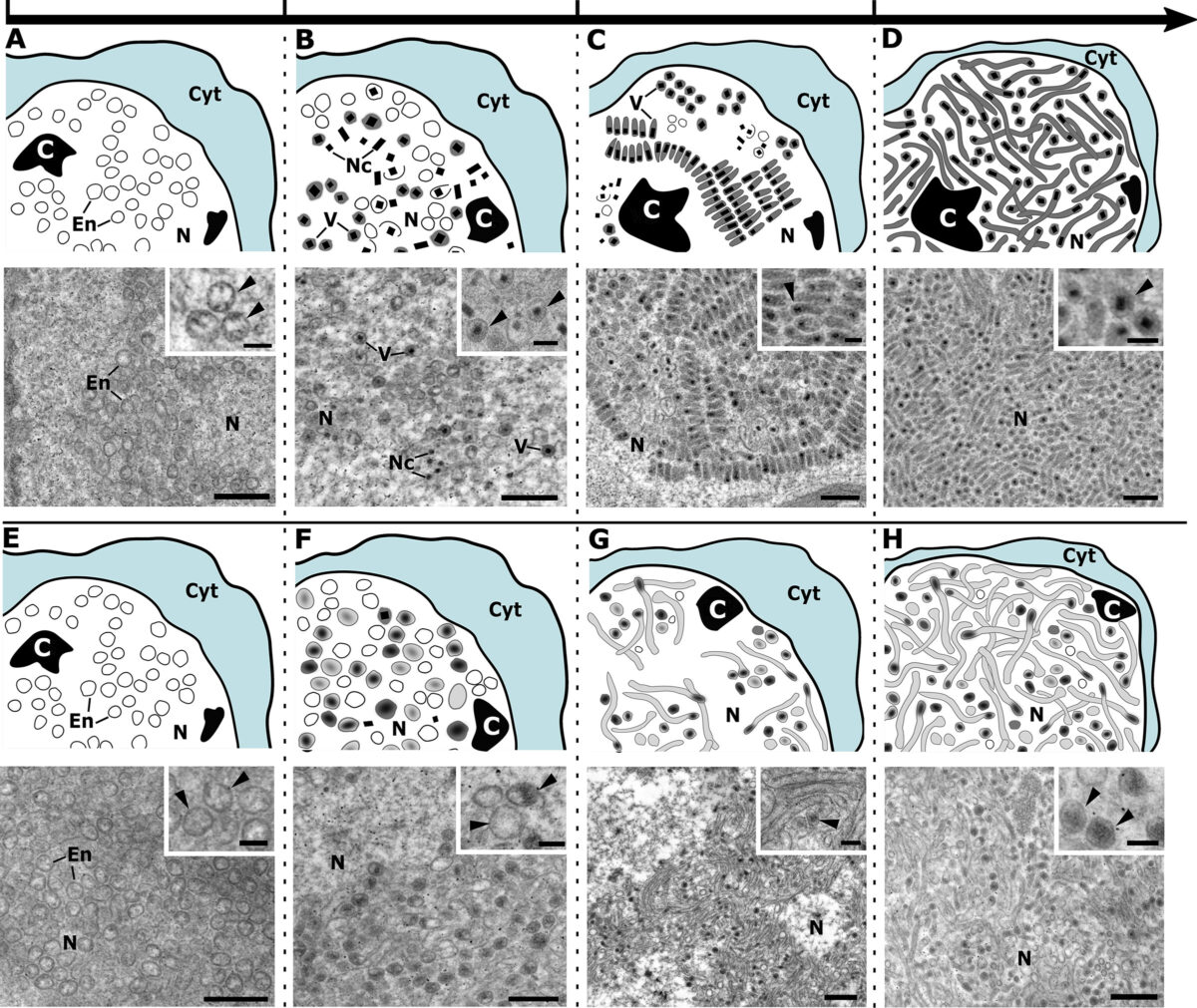Identification of a viral gene essential for the genome replication of a domesticated endogenous virus in ichneumonid parasitoid wasps

Thousands of endoparasitoid wasp species in the families Braconidae and Ichneumonidae harbor “domesticated endogenous viruses” (DEVs) in their genomes. This study focuses on ichneumonid DEVs, named ichnoviruses (IVs). Large quantities of DNA-containing IV virions are produced in ovary calyx cells during the pupal and adult stages of female wasps. Females parasitize host insects by injecting eggs and virions into the body cavity. After injection, virions rapidly infect host cells which is followed by expression of IV genes that promote the successful development of wasp offspring. IV genomes consist of two components: proviral segment loci that serve as templates for circular dsDNAs that are packaged into capsids, and genes from an ancestral virus that produce virions. In this study, we generated a chromosome-scale genome assembly for Hyposotor didymator that harbors H. didymator ichnovirus (HdIV). We identified a total of 67 HdIV loci that are amplified in calyx cells during the wasp pupal stage. We then focused on an HdIV gene, U16, which is transcribed in calyx cells during the initial stages of replication. Sequence analysis indicated that U16 contains a conserved domain in primases from select other viruses. Knockdown of U16 by RNA interference inhibited virion morphogenesis in calyx cells. Genome-wide analysis indicated U16 knockdown also inhibited amplification of HdIV loci in calyx cells. Altogether, our results identified several previously unknown HdIV loci, demonstrated that all HdIV loci are amplified in calyx cells during the pupal stage, and showed that U16 is required for amplification and virion morphogenesis.
Ange Lorenzi, Fabrice Legeai, Véronique Jouan, Pierre-Alain Girard, Michael R Strand, Marc Ravallec, Magali Eychenne, Anthony Bretaudeau, Stéphanie Robin, Jeanne Rochefort, Mathilde Villegas, Gaelen R Burke, Rita Rebollo, Nicolas Nègre, Anne-Nathalie Volkoff. PLoS Pathog. 2024 Apr 25;20(4):e1011980. doi: 10.1371/journal.ppat.1011980.



